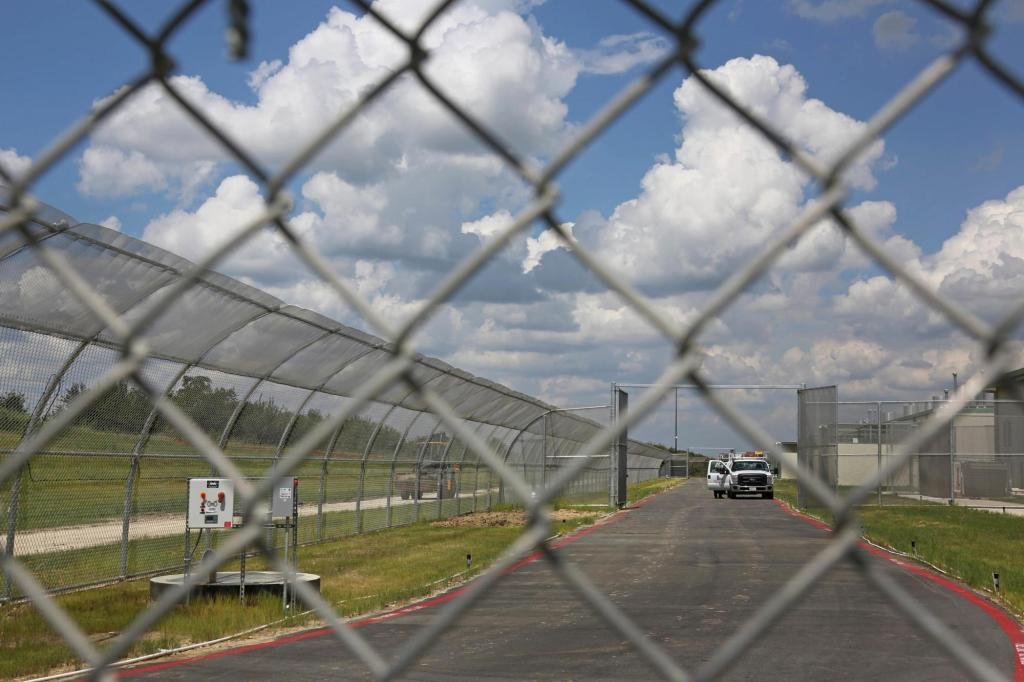Shooting Incident at Texas Immigration Detention Center: A New Wave of Violence?
As fireworks illuminated the Texas sky on the night of July 4, chaos erupted outside the Prairieland Detention Center in Alvarado. Amid the festive revelry, a calculated ambush unfolded, resulting in the shooting of a police officer and the arrest of ten individuals on attempted murder charges. This shocking incident has ignited heated debate and concerns about the increasingly volatile landscape surrounding immigration policy and enforcement in the United States.
The Ambush: A Night of Violence
The ambush outside the immigration facility was meticulously planned, according to Nancy Larson, acting U.S. attorney for the Northern District of Texas. Video footage reveals individuals dressed in black military-style clothing launching fireworks, a spectacle that masqueraded as a celebration but was calculated to provoke a response from U.S. Immigration and Customs Enforcement (ICE) personnel. “All of this seemed to be designed to draw ICE personnel outside the facility,” Larson noted during a press conference.
As unarmed corrections officers approached the group to investigate, chaos ensued. “At least 20 to 30 rounds were fired at these officers,” Larson explained, highlighting the severity of the attack. The police officer, later identified as having been shot in the neck, thankfully survived, but the brazen nature of the assault raises alarming questions about security in and around detention centers. Items recovered from the scene included an AR-style rifle, masks, tactical gear, and slogans such as “Resist fascism, fight oligarchy,” illuminating the attackers’ intentions.
Political Context: A Powder Keg
This ambush occurs against a backdrop of intensified deportation policies under the Trump administration’s aggressive immigration agenda. Dr. Amelia Cruz, an expert in immigration studies at the University of Southern California, indicates that “increased militarization of immigration enforcement is a double-edged sword.” The consequences appear to have escalated violence, evident in both this incident and a subsequent shooting in McAllen involving a man with an assault rifle targeting federal agents.
- Increase in Violence: A rise in violent encounters correlating with tougher immigration policies.
- Community Backlash: Local communities growing increasingly polarized over immigration enforcement.
- Future Risks: Potential for more ambushes and retaliatory violence as tensions escalate.
Community Reaction: Divided Opinions
In Alvarado, a town with a population of approximately 6,225, residents are left grappling with the implications of such violence. “We’ve always had our share of disagreements, but this? It feels like we’re living in a war zone,” remarked Clara Bishop, a long-term resident and local business owner. Community sentiments range from outrage against the ambushers to fear of increased militarization of local law enforcement.
Amid this unrest, U.S. District Court records show the assailants are facing severe charges, including three counts of attempted murder of a federal officer. Further inquiries into their connections reveal that one individual has been charged with obstruction of justice, hinting at a more extensive network involved in the ambush scheme.
The Perception of ICE Among Immigrant Communities
The incident underscores the complex relationship immigrant communities have with ICE and local law enforcement. According to a report by the American Immigration Council, communities often feel besieged by the very institutions that are supposed to protect them. “Being an immigrant in today’s climate is akin to walking a tightrope,” said Dr. Victor Martinez, a sociologist specializing in immigrant studies. “The fear of deportation looms large, even among those who have legal status.”
The ramifications of this ambush will likely ripple through communities across the country, leading many to reconsider their relationship with law enforcement. “The narrative surrounding immigration has been so heavily politicized that acts of violence like these only amplify the divisions. We need dialogue, not silence,” Dr. Martinez added.
Looking Ahead: The Challenge of Finding Solutions
Analysts suggest that comprehensive immigration reform is essential if the cycle of violence is to be quelled. Policy measures aimed at both securing borders and providing pathways to citizenship may serve as a protest against the culture of fear surrounding immigration enforcement. “Addressing these underlying issues is crucial for preventing more violence in the future,” argued Dr. Cruz, emphasizing the need for collaborative efforts between communities and law enforcement.
As the investigation continues, law enforcement has increased protective measures for detention center staff. The recent ambush could mark a turning point, both for U.S. immigration policy and for community relations with law enforcement. With heightened tensions and the growing risk of further violence, the nightmare of July 4 in Alvarado serves as a stark reminder that the struggle over immigration policy has escalated into a perilous battleground.





